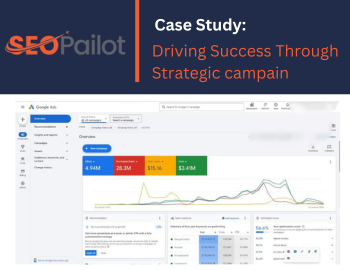How you ensure your website is SEO-friendly ?
Launching a new website? SEO isn’t something you can “fix later.” From the moment your domain goes live, search engines start crawling, indexing, and forming opinions about your site. A single misstep in the early stages—like poor site structure or missing metadata—can haunt your rankings for months. But don’t panic! In this guide, you’ll learn how to bake SEO into your website’s DNA from day one. Whether you’re building with WordPress, Shopify, or custom code, these non-negotiable steps will save you time, money, and headaches down the road. 1. Start With a Solid Technical Foundation Choose the Right Platform WordPress: Ideal for flexibility (plugins like Yoast SEO, Rank Math). Shopify: Built-in SEO features for eCommerce (automatic sitemaps, clean URLs). Headless CMS: For developers prioritizing speed (combine with a static site generator like Gatsby). Avoid: Platforms that lock you into messy URLs or limit customization. Set Up Clean, Descriptive URLs Bad: yoursite.com/?p=123 Good: yoursite.com/seo-friendly-website-guide Use hyphens (-) to separate words, and keep URLs short. Install an SSL Certificate Google prioritizes HTTPS sites. Most hosts offer free SSL (Let’s Encrypt). 2. Optimize Site Structure for Crawlers & Users Create a Logical Hierarchy Organize pages into categories/subcategories (e.g., /blog/, /services/seo-audits/). Use breadcrumbs to help users and search engines navigate. Build an XML Sitemap Submit it to Google Search Console and Bing Webmaster Tools. Tools like Screaming Frog or Yoast can auto-generate sitemaps. Set Up robots.txt Wisely Block search engines from crawling duplicate pages (e.g., staging sites, admin folders). Never block CSS/JS files—Google needs them to render pages properly. 3. Master On-Page SEO Basics Keyword Research Before You Write Use tools like Ahrefs, SEMrush, or Ubersuggest to find: Primary keywords (e.g., “SEO-friendly website”). LSI keywords (e.g., “site structure,” “meta tags”). Craft SEO-Friendly Titles & Meta Descriptions Keep titles under 60 characters and include your primary keyword. Write meta descriptions as compelling CTAs (150–160 characters). Optimize Headings (H1-H6) Use one H1 per page (your main title). Break content into scannable sections with H2s/H3s. 4. Prioritize Speed & Mobile Experience Test Core Web Vitals Early Aim for: LCP (Largest Contentful Paint): <2.5 seconds. FID (First Input Delay): <100 ms. CLS (Cumulative Layout Shift): <0.1. Tools: Google PageSpeed Insights, WebPageTest. Compress Images Use WebP format and tools like ShortPixel or TinyPNG. Lazy-load offscreen images. Design Mobile-First Google uses mobile-first indexing. Test responsiveness with Google’s Mobile-Friendly Test. 5. Content That Ranks (and Converts) Launch With a Content Strategy Publish 3–5 cornerstone articles targeting high-intent keywords. Avoid thin content—every page should have 500+ words of value. Internal Linking from Day One Link new pages to relevant existing content (e.g., “Learn more about keyword research here”). Use descriptive anchor text (not “click here”). Plan for Blog Expansion Schedule content updates (e.g., “2024 SEO Trends”) to keep your site fresh. 6. Avoid These Day-One SEO Killers Duplicate Content: Use canonical tags if you must replicate content. Ignoring Analytics: Install Google Analytics and Search Console immediately. Forgetting Local SEO: If you have a physical business, set up Google My Business. Skipping Alt Text: Describe images for accessibility and keyword relevance. SEO Launch Checklist Before hitting “publish,” ensure your site: ✅ Uses HTTPS ✅ Has clean, keyword-rich URLs ✅ Includes meta titles/descriptions on every page ✅ Loads quickly on mobile (test with multiple devices) ✅ Submits XML sitemap to search engines ✅ Links internally to relevant pages Your Turn! What’s the first SEO step you take when launching a website? Share your pro tips (or horror stories!) in the comments below. Let’s help each other build sites that dominate Google from day one.



